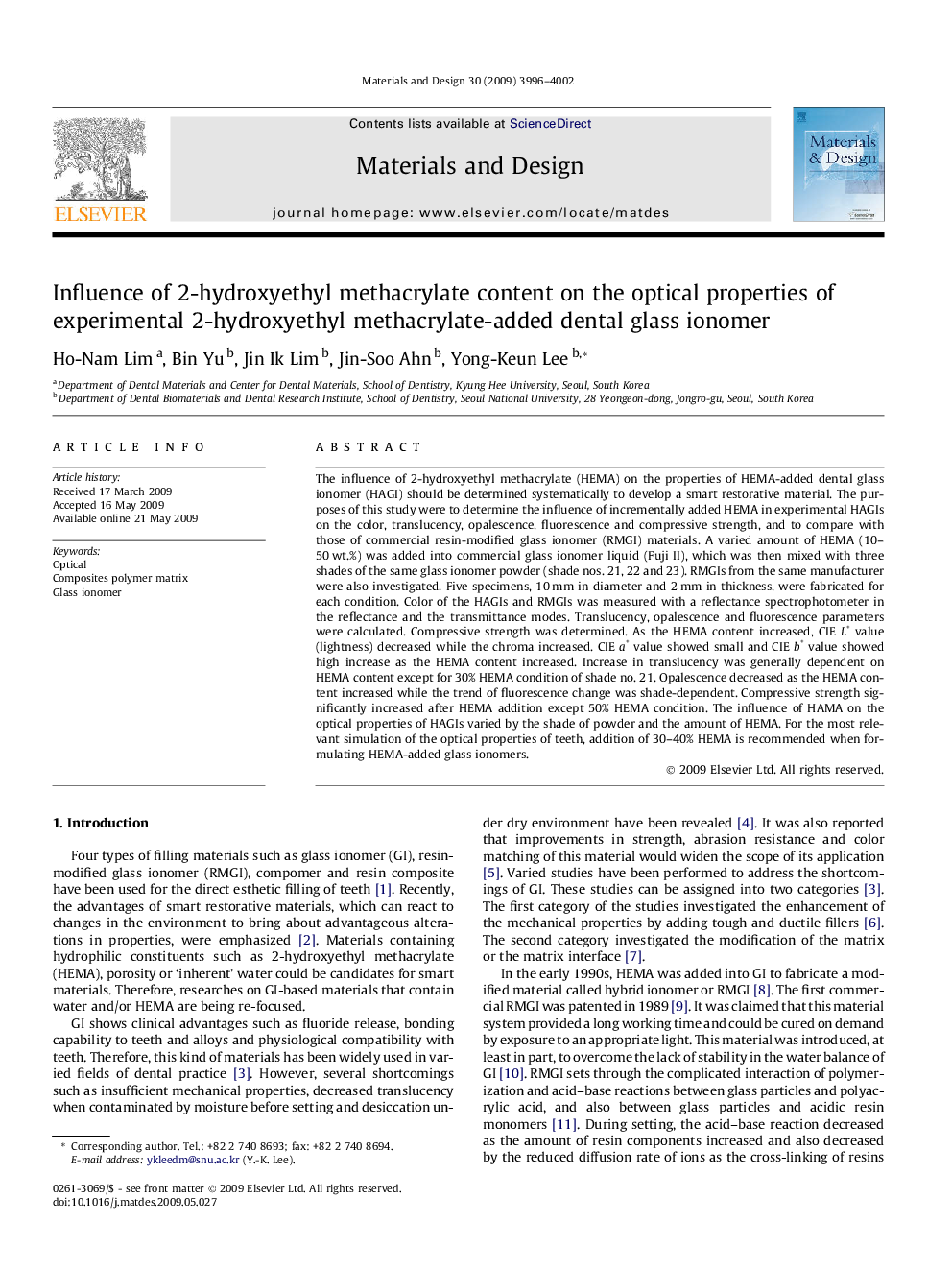| Article ID | Journal | Published Year | Pages | File Type |
|---|---|---|---|---|
| 832385 | Materials & Design (1980-2015) | 2009 | 7 Pages |
The influence of 2-hydroxyethyl methacrylate (HEMA) on the properties of HEMA-added dental glass ionomer (HAGI) should be determined systematically to develop a smart restorative material. The purposes of this study were to determine the influence of incrementally added HEMA in experimental HAGIs on the color, translucency, opalescence, fluorescence and compressive strength, and to compare with those of commercial resin-modified glass ionomer (RMGI) materials. A varied amount of HEMA (10–50 wt.%) was added into commercial glass ionomer liquid (Fuji II), which was then mixed with three shades of the same glass ionomer powder (shade nos. 21, 22 and 23). RMGIs from the same manufacturer were also investigated. Five specimens, 10 mm in diameter and 2 mm in thickness, were fabricated for each condition. Color of the HAGIs and RMGIs was measured with a reflectance spectrophotometer in the reflectance and the transmittance modes. Translucency, opalescence and fluorescence parameters were calculated. Compressive strength was determined. As the HEMA content increased, CIE L∗ value (lightness) decreased while the chroma increased. CIE a∗ value showed small and CIE b∗ value showed high increase as the HEMA content increased. Increase in translucency was generally dependent on HEMA content except for 30% HEMA condition of shade no. 21. Opalescence decreased as the HEMA content increased while the trend of fluorescence change was shade-dependent. Compressive strength significantly increased after HEMA addition except 50% HEMA condition. The influence of HAMA on the optical properties of HAGIs varied by the shade of powder and the amount of HEMA. For the most relevant simulation of the optical properties of teeth, addition of 30–40% HEMA is recommended when formulating HEMA-added glass ionomers.
